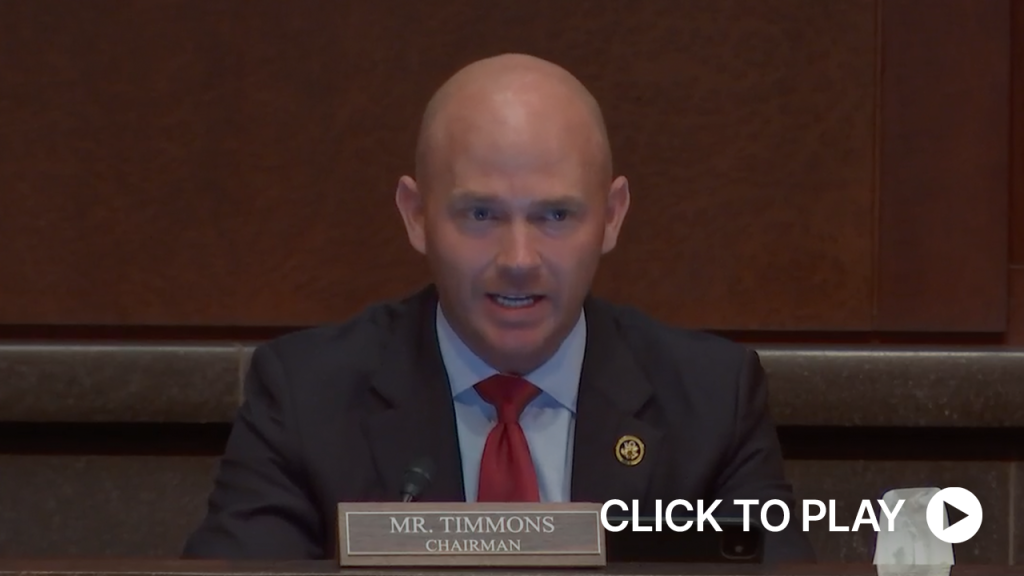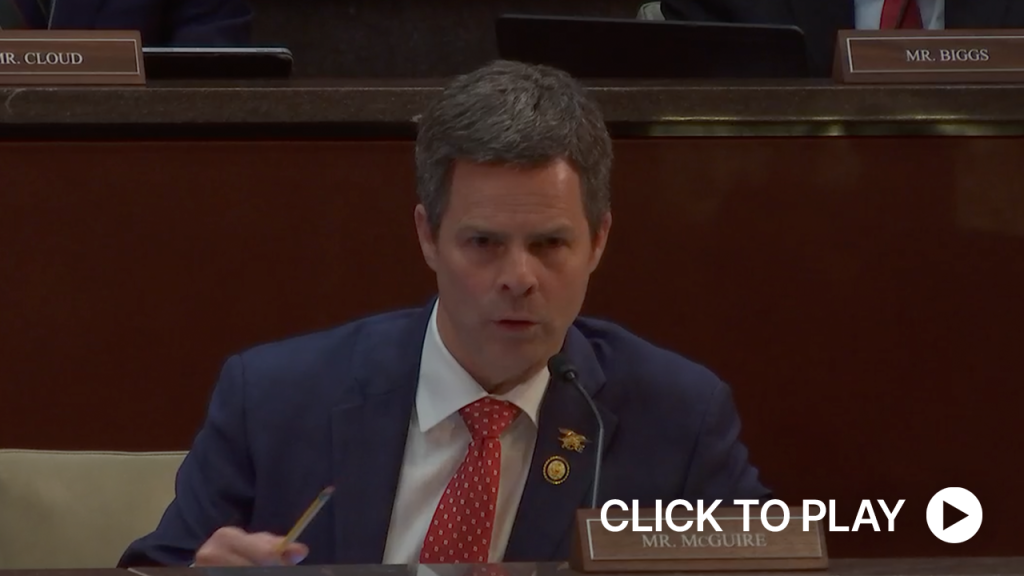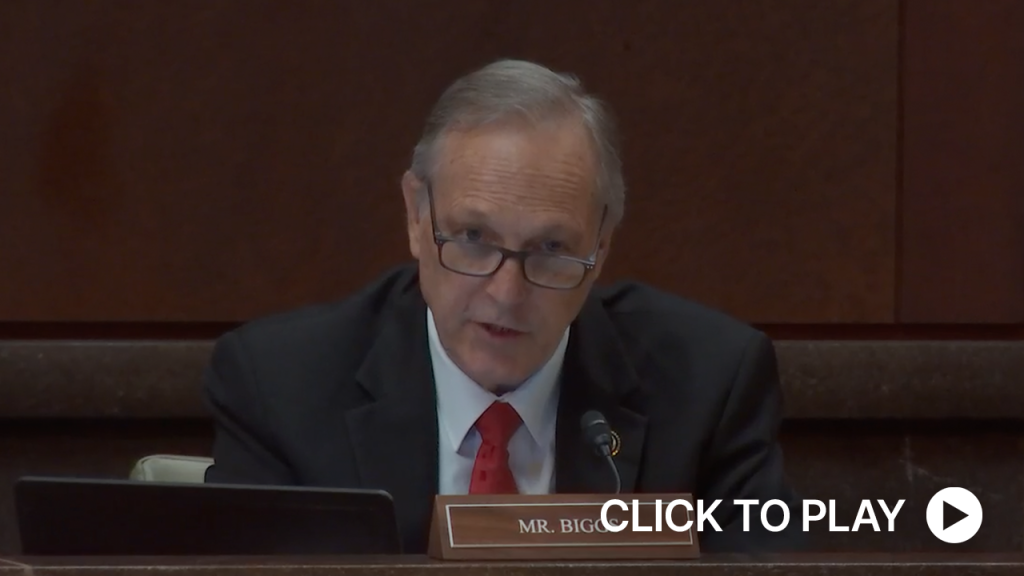
Hearing Wrap Up: Swift Action Needed to Address Unauthorized Drone Activity Over U.S. Military Installations
WASHINGTON—Yesterday, the Subcommittee on Military and Foreign Affairs held a hearing on “Securing the Skies: Addressing Unauthorized Drone Activity Over U.S. Military Installations.” During the hearing, members discussed how drone incursions over military installations have increased in frequency, posing a significant threat to U.S. national security. Members noted that while multiple federal agencies share responsibility for countering drone threats, no single entity has clear authority over deterrence, leaving U.S. military sites exposed to surveillance, espionage, or potential weaponization. Subcommittee Chairman William Timmons (R-S.C.) and Ranking Member Suhas Subramanyam (D-Va.) pledged to work together to find solutions to enhance military security and counter aerial threats.
Key Takeaways:
The unauthorized use of drones threatens our national security. Ineffective policies and difficulties distinguishing threats from recreational usage leave military installations vulnerable to exploitation by hostile nations and entities.
- Subcommittee Chairman Timmons noted in his opening statement, “These incursions are not from hobbyists being blown off course. The multitude of drones reported flying over bases in the past several years to yield a coordinated effort by our adversaries to collect valuable intelligence and surveillance of some of our most sensitive military equipment. These incursions often are designed to disrupt important trainings and create chaos.”
- Rear Admiral Spedero Jr.—Vice Director of Operations, J3, Joint Chiefs of Staff, U.S. Department of Defense—testified “Now, being able to discern hostile intent and hostile act, as referred to in the opening comments may be very challenging, as is negligent activity being conducted by someone just flying a drone irresponsibly, whether that is a recreational enthusiast, or it is someone that’s using a drone for commercial aspects. So, it can be a challenge here in the homeland to determine that.”
Adversaries exploit gaps and shortages in U.S. defense capabilities, using drones for surveillance, intelligence gathering, and potential attacks, even along the southern border.
- Rear Admiral Spedero acknowledged technological disparities in drone detection that create vulnerable gaps, saying, “In general, the technology to field systems has far outpaced the technology to defeat those systems. It’s a much wider, broader, deeper market for drone application, for commercial and recreational purposes, so hence that technology has evolved very quickly from radio control drones to now fully autonomous drones that may or may not even rely on reception of a GPS signal, which would make it very challenging to intercept.”
- Rep. John McGuire (R-Va.) pointed out that adversaries near the southern border are using drones to observe Border Patrol operations, and that implementation of 10 U.S.C. 130i to safely conduct those operations without drone surveillance is absent.
Strong leadership and swift action are necessary to mitigate the threat, strengthen military readiness, reinforce U.S. deterrence against drones, and provide answers to the American people.
- Mark Roosevelt Ditlevson—Acting Assistant Secretary of Defense for Homeland Defense and Hemispheric Affairs, U.S. Department of Defense—suggested solutions to improve the U.S. response to drones in his opening statement. “You can’t defeat what you can’t see. On the legislative front, we continue to engage with members of Congress to seek modest but important refinements to do these counter UAS authorities under section 130i. Our legislative proposal is intended to allow the department to protect additional locations and missions, add greater stability for long-term planning and resources allocation within the department, and facilitate improved understanding and cooperation among U.S. interagency and local partners.”
- He explained that the Department of Defense is looking to streamline its processes so commanders would know what authority they have to respond to drone threats.
Member Highlights:
Subcommittee Chairman Timmons inquired about the discrepancies in technology among military bases and their effects on preparedness against drone incursions.
Chairman Timmons: “What percent of base commanders have any technology to actually track drones, as opposed to just ‘ooh I saw a drone,’ and then you report it?”
Rear Admiral Spedero: “[T]he capabilities at each base [are] varied. Again, the specifics for the individual locations would be better in a classified setting, but it is not comprehensive, I can tell you that. It is not sufficient, and again varies from base to base, from very little to somewhat more comprehensive.”
Rep. McGuire (R-Va.) discussed the importance of having the necessary authority at the southern border to mitigate threats posed by drones.
Rep. McGuire: “I was recently at the southern border, where I met with Tom Homan, I met with Border Control, ICE agents, mayors, sheriffs, business owners, 10th Mountain Division folks, that are protecting our border from San Diego all the way to Texas. And I asked them ‘are you seeing drones coming across the southern border and surveilling our troops?’ and the answer was ‘yes’. And I said, ‘is 130i working for you right now?’ and I know what they said, but Admiral, what do you think? Is 130i right now working for us?”
Rear Admiral Spedero: “So, they don’t have 130i. That’s the first piece, and we’re working to resolve that. So, for instance, the National Defense Series had just been established as an annex does not have 130i.”
Rep. McGuire: “I’m going to get to a point. And how about you? You have an opinion on 130i as of today?”
Mr. Ditlevson: “Yes, Congressman, if we can get 130i implemented in these areas, where our joint task force southwest border is operating, it should enable the commanders on the ground to have those expanded authorities to allow them to predict and mitigate these UAS threats.”
Representative Andy Biggs (R-Ariz.) discussed how negligent commercial and recreational drone usage over military bases diverts attention away from serious national security threats, leaving bases vulnerable.
Rep. Biggs: “Admiral Spedero, could you explain how unauthorized drone activity, even when it’s caused by recreational or commercial users, diverts critical security resources away from responding to legitimate national security threats, please?”
Rear Admiral Spedero: “Once that word got out—the public messaging about responsible drone use—once the word got out about the flight restrictions, we saw rapid decline in the number of sightings. The drone activity essentially went away… If we can message to the public that the responsible commercial and recreation application of your drone is an imperative to prevent diverting our attention and our resources from investment, training, and response, we’re going to be better at defending the homeland, but if we have to be continually be aware of negligent drones flying into our base, it is going to divert attention.”
Click here to watch the hearing.
Distribution channels: U.S. Politics
Legal Disclaimer:
EIN Presswire provides this news content "as is" without warranty of any kind. We do not accept any responsibility or liability for the accuracy, content, images, videos, licenses, completeness, legality, or reliability of the information contained in this article. If you have any complaints or copyright issues related to this article, kindly contact the author above.
Submit your press release


